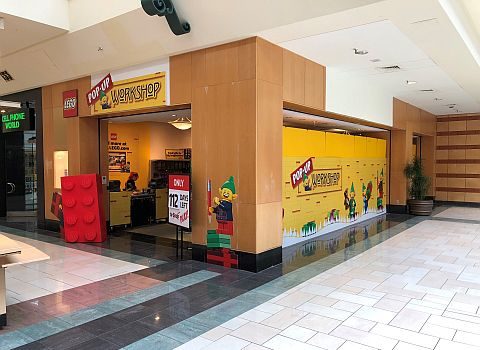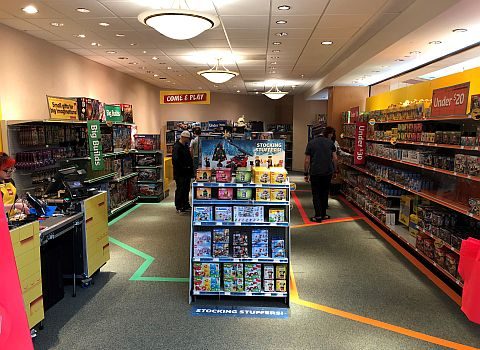Looks like LEGO Ideas is on a roll with lots of new contests for teen and adult LEGO fans! The LEGO Ideas Voltron contest finished just a few days ago, and we just talked about the new The Incredibles contest last week. And now, there is a new contest for LEGO Technic fans! See details below. 🙂

➡ LEGO TECHNIC CONTEST – OVERVIEW: The recent launch of the futuristic #42081 LEGO Technic Volvo Concept Wheel Loader ZEUX (we talked about this set here) opened the door to creative thinking about the future of construction machines. The LEGO Ideas team is interested to see how LEGO fans see the future of construction vehicles, so they teamed up with LEGO Technic and Volvo Construction Equipment to invite you to build the construction machines of the future – either autonomous or not! What will these construction machines look like, what tasks will they perform? Show off your design of what’s to come!
➡ LEGO TECHNIC CONTEST – HOW TO ENTER: 1.) Build your futuristic construction machine using LEGO elements or a digital building tool like LEGO Digital Designer. You’re welcome to use image editing tools, such as Photoshop, to enhance your photos/presentation. 2.) Take up to five photos of your creation and submit them to the contest. Make sure to show off all angles and any features or functions of your creation. 3.) Add a title and short description. 4.) Upload your entry to the contest using the blue Submit Your Entry button on this page.
➡ LEGO TECHNIC CONTEST – RULES: Your entry should consist of a minimum of approximately 50% LEGO Technic parts. The remaining may be LEGO system bricks or LEGO Constraction elements. You are encouraged to use the iconic black and yellow Volvo Construction Equipment colors, although this is not a requirement. If you wish to use stickers or printed elements, only LEGO-made stickers or printed elements are allowed in your entry and only Volvo stickers or non-licensed stickers/prints may be used. Entries consisting of or containing copies of any existing third-party work or creation, or infringements of any third party intellectual property right will not be eligible for the contest (this includes references to Intellectual property such as other vehicle brands or vehicle accessory brands which might be related to construction machines). Projects may only contain genuine (not cut, glued, drawn on, or modified) LEGO bricks. You must be the original creator of all creative work you submit (the model, images, photographs, description text, etc.) and you must have the exclusive right to submit your model to this LEGO Ideas contest. You may not submit a model made by, or on behalf of, someone else. Entries must be new creations and not previously posted online or submitted to any other contest. You must be at least 13 years old to participate and enter. Please note that there are other rules and restrictions, so make sure you read through the contest page carefully.
➡ LEGO TECHNIC CONTEST – DEADLINE: You must submit your entry by October 18th, 2018 at 6:00 a.m. EST. You can use an online time-zone converter to make sure you don’t miss the deadline.
➡ LEGO TECHNIC CONTEST – JUDGES: A panel of judges including members of the LEGO Technic team and the Volvo Construction Equipment team will choose a grand prize winner and two runner up winners based on: overall coolness and originality – 25%, most inspired details – 25%, relevance to contest theme, 25%, and best use of LEGO elements – 25%. In addition, the top 10 physical entries will be invited to be displayed at the VOLVO museum in Sweden.

➡ LEGO TECHNIC CONTEST – PRIZES: One Grand Prize winner will receive the following: a trip to the Volvo Customer center in Eskilstuna, Sweden, to test-drive construction machines and visit the Volvo Munktell Museum, Volvo merchandise, and the following LEGO Technic sets: the #42079 LEGO Technic Heavy Duty Forklift, #42080 LEGO Technic Forest Machine, the #42081 LEGO Technic Volvo Concept Wheel Loader ZEUX, the #42082 LEGO Technic Rough Terrain Crane. The two runner up winners will receive the following: Volvo merchandise and the same four LEGO Technic sets as the grand prize winner. In addition, the top 10 physical entries will be invited to be displayed at the Volvo Munktell Museum in Sweden and photographed to be part of a digital campaign. The display is currently planned for one month after the contest winners are announced and would last for approximately two months in total, so remember not to disassemble your entries in case yours is selected. Shipment of the models to and from the Volvo Munktell Museum will be covered by the Volvo Construction Equipment team.

➡ LEGO CONTEST – WINNERS ANNOUNCEMENT: Potential winners will be contacted via the entrant’s email address after November 9th, 2018. Winners will be announced on LEGO Ideas on November 21st, 2018. Please note that all winners have to return the signed Winner’s Certification Documents. A winner who does not return their Winner’s Certification Document within one week (5 days) of receiving it will be disqualified, and a new winner will be selected.

We just talked about the new LEGO Technic sets a few days ago (2018 LEGO Technic Summer Sets Review), and we pointed out that one of the most interesting sets was the futuristic #42081 LEGO Technic Volvo Concept Wheel Loader ZEUX. Some readers even mentioned they would like to see more LEGO Technic sets with a futuristic design. So, it’s super cool to see that this contest challenges LEGO Technic fans to build a construction machine from the future! I can’t wait to see what talented designers come up with! If you need some inspiration, you might want to take a look at the recently released sets at the LEGO Technic section of the Online LEGO Shop.

What do you think? How do you like this LEGO building challenge? Are you planning to enter? What are you planning to build? Feel free to share and discuss in the comment section below! 😉
And you might also like to check out the following related posts:
















